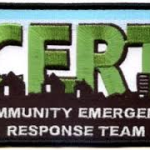You may have come across the term MAG (Mutual Aid Group); some may just call it their group. A MAG is essentially a group of likeminded people that form a community and under certain circumstances come together to share resources and workload.
There are a couple ways that I am familiar with to set up a MAG; one is a designated BOL (Bug Out Location) that all members fall back to. Another way that can be done on a smaller scale is to have an agreement between one or two other people to store resources at one another homes and bug out to one another’s homes if conditions there are safer than they are at your home.
I have heard Jack Spirko from The Survival Podcast mention that sometimes a group will pool their money together to purchase a BOL. But often people do not agree what should be done on the property and this can cause a rift. Jack suggests in this instance, have the seller subdivide the property and the buyers each by a smaller plot; they can then do whatever they like on their parcel.
I have another unique option that will only work for Christian’s. We would follow the example of the first church as written about in the book of Act’s. In Act’s, everyone shared, for the greater good of the group. The twelve disciples were “in charge” and they submitted to Christ. The disciples created a subgroup to manage the care and feeding of everyone, so they could concentrate on spreading the word.
I say unique to Christians because in order for this type of MAG to work, everyone involved would need to go vertical to Christ instead of horizontal to each other, when frustrations or problems came up. I believe that when the church is forced underground into house churches, MAG’s will naturally form out of necessity.
There will be conflict, but we have been given ways to handle this; Mathew 18:15-17
“”If your brother sins against you, go and show him his fault, just between the two of you. If he listens to you, you have won your brother over.
But if he will not listen, take one or two others along, so that ‘every matter may be established by the testimony of two or three witnesses.
If he refuses to listen to them, tell it to the church; and if he refuses to listen even to the church, treat him as you would a pagan or a tax collector.”
In the book of Revelation, it tells that believers will be persecuted and put to death. This is just me speculating, but I believe that because of this the church will go underground and house churches will form, which essentially are MAG’s.
Please click here to vote for Prepared Christian as a top Prepper site!
If you liked this article please think about sharing it on the social media listed below, thanks!




